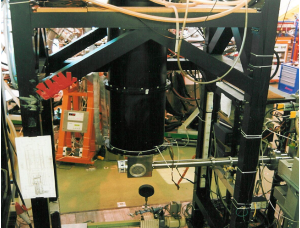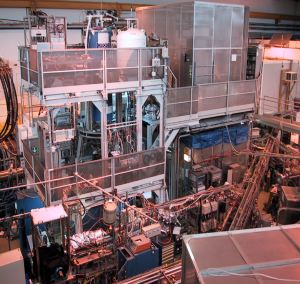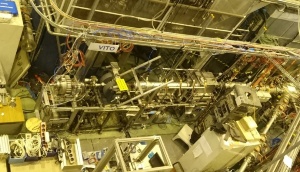
Study of weak interaction in β-decay

Experiments at ISOLDE study low energy b–decays of specific radioactive isotopes produced and separated at ISOLDE which are sensitive to the structure and properties of electrowek interactions. Experiments are performed using several different setups using different experimental methods.
Low-Temperature Nuclear Orientation setup NICOLE (online dilution 3He-4He refrigerator) enables us to perform experiments with the oriented samples (radioactive ions produced and separated by ISOLDE are implanted to the foil, cooled to ~mK temperatures and oriented in strong magnetic field). Measurements of the angular distributions of particles emitted by the b–decay of oriented nuclei can search for possible admixture of the tensor interaction which is in Standard model of electroweak interactions forbidden.

System of 2 Penning traps + retardation spectrometr WITCH enables us to catch and cool radioactive ions (35Ar) from ISOLDE in Penning traps, let them decay at rest and then study energy spectrum of recoiled ions after the b-decay - this shape is sensitive to possible admixture of the scalar interaction (forbidden in Standard model of electroweak interactions).
Cryostat with superconducting 9T magnet (originally WITCH) after the installation of the specialized system of particle detectors in strong mgt. field WISARD enables us to measure the b-delayed proton decay of isotop 32Ar. Due to the fact that the nuclei decaying by proton decay are moving (recoiling after the previous b–decay) the shape of the Doppler deformed proton spectrum reflects the shape of the energy spectrum of recoiled ions after the b-decay – so we study the same quantity as in experiment WITCH, only by different experimental method.

Specialized beamline VITO enables us by means of “optical pumping” by lasers to polarize ion beams from ISOLDE and after the implantation into the substrate placed in strong mgt. field (1.5T) perform experiments with the oriented nuclei – e.g. measurement of the angular distribution of radiation emitted by the b–decay of oriented 35Ar.

